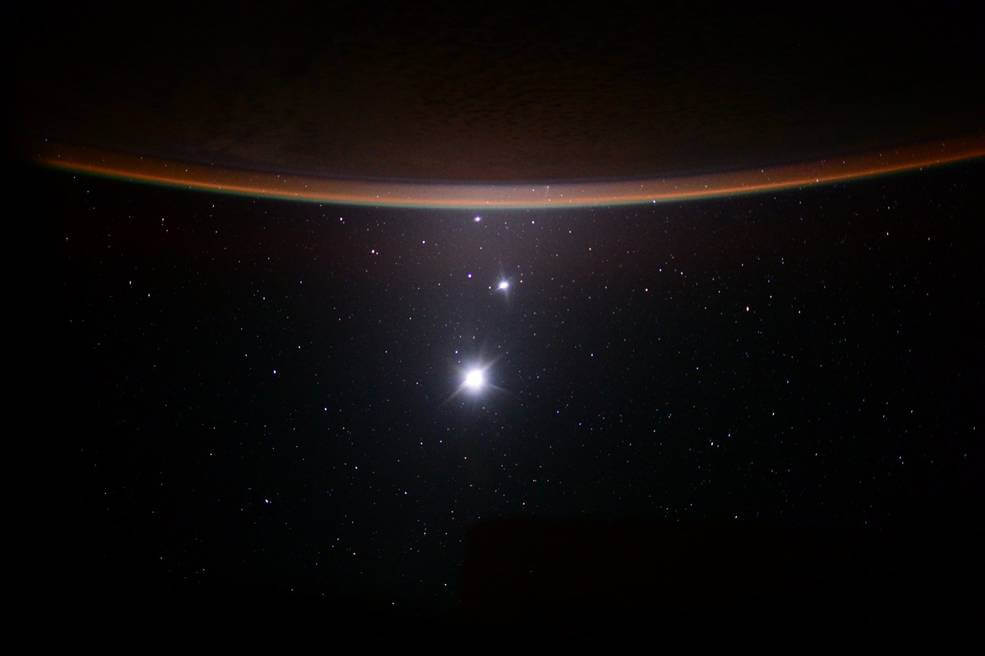Could We Terraform Venus?
Let’s Discover the Possibility of Terraforming Venus: Challenges, Potential Solutions, and Future Prospects
Video of the day December 26th 2019
The idea of terraforming a planet has long been an idea routed in science fiction, but some strides are being made to show that it is possible. But instead of doing it on Mars, can we terraform Venus to make it a place we can live? Join us as we explore this line of thinking.
Venus’s Atmospheric Challenges
Even if you know only a little bit about Venus, you know that it is a place that is near infinitely hot. It’s a planet that has an event going on known as the “runaway greenhouse effect”. Which means that various gasses created on the planet are getting trapped up in the atmosphere, and when that happens, the temperature of the planet starts to rise. First slowly, but then as more and more gasses propagate in the atmosphere, they grow even more. For Venus, this happened rapidly, and no one is really sure why:
“Something happened on Venus where a huge amount of gas was released into the atmosphere and couldn’t be re-absorbed by the rocks,” Scientist Michael Way said in a statement.
On Earth, and certain other planets, the gasses go up and down in a cycle, but when there is too much to be absorbed, like on Venus, that’s when the greenhouse effect happens. The surface of Venus is now a scorching mess, and it’s so hot that it could melt not just rock, but metal. So despite it being a place that is relative closer to us, even being called out “sister planet”, it doesn’t seem like a place that would be worth checking out, right? But despite everything going on with the planet, there are some positives.
On Mars, and the Moon, and even Titan, the gravity of the planet is MUCH less than Earths. So that means humanity (barring an artificial gravity system) would have to work hard on the colony of those planets each and every day in order to stay fit and healthy.
But on Venus, because it’s just a little smaller than Earth and has similar mass, the gravity is 9/10’s of what Earth’s is. Which means we’d only be a little lighter, which means our bones wouldn’t deteriorate like they would in other places. Hence why many people think Venus is better because it’s better suited for our bodies. So that’s one pulse in its favor. What’s more, there are some scientists who posit that somewhere on Venus there COULD be a place where we could live, and even have drinkable water:
“Venus currently has almost twice the solar radiation that we have at Earth, however, in all the scenarios we have modeled, we have found that [it] could still support surface temperatures amenable for liquid water,” Way said
That’s a big if, and if we’re being honest, that’s assuming a lot with what’s going on with the planet right now. We do know loosely what’s going on with Venus, but we can only scan it from above because it’s so hot that it would melt any probe, rover, satellite, or any other scanning or tracking device we would try and put it on the planet.
So let’s be honest here, is there ANY way that terraforming COULD work on the planet Venus to make it livable? Technically…yes.
Terraforming (in the Non-Sci-Fi sense) is the act of introducing elements into an environment in order to make it better. For example, irrigation can be deemed a kind of terraforming because you’re introducing water into a dry land in order to help things grow and thus not be dry anymore. But what we would want to do with Venus is something far beyond that.
Because before we could even touch the surface we would need to delve into the atmosphere and make that much better.
Believe it or not, messing with an atmosphere to try and manipulate it isn’t as hard as you might think. After all, we’ve been doing it for years here on Earth. That’s part of the reason why global warming is happening. The problem with Venus though is that this goes beyond basic manipulation. Venus for all intents and purposes is basically a gas planet. We can’t just “see” the surface of Venus because of all the greenhouse gasses that are filling up the atmosphere. So before we touch the ground, we’d need to disperse all the negative gasses that are filling up the planet’s atmosphere and surface, and that’s not easy to do from a distance, nor with the time that we’re trying to get this done.
For example, one famous scientist Carl Sagan promised the artificial creation of bacteria that would do a type of photosynthesis of sorts that would absorb the Carbon Dioxide that is mostly filling the atmosphere and pump out non-harmful gases like oxygen into the atmosphere. Thus making it a more suitable place. The problem here is that the bacteria on Venus would not have the same protections as here on Earth, and they would die quickly, and thus re-release all the Carbon Dioxide that they have absorbed.
Solar Winds and Venus’s Magnetosphere
Another proposed idea is that we introduce certain elements from Earth that could act as a “sink” to the Carbon Dioxide. Not unlike how certain rocks on planets absorb things like Carbon Dioxide and various harmful gasses. The doing of this would allow the gasses to stay in the substances, and thus no return to the atmosphere, which makes this a good plan overall. However, it would take a LOT of material to do this, and that can cause problems. Not to mention, because of the harm done by the runaway greenhouse effect, the carbon that should be in the ground is now in the air. So to have any hope of serious life on Venus, we’d need the ground to reabsorb the carbon itself. Which takes a lot of time. There are theories as to how this could be expedited, but they haven’t proven fruitful as of yet.
And on and on the theories go as to how to make Venus’ atmosphere work. From Hydrogen being used to help dissolve things (which could work but would take massive amounts of the substance) to literally expulsing the gas into space so that it can’t continue to do any harm to the planet. While each idea is rooted in scientific principle, there are many factors that lead to it not being plausible or feasible at this time. Oh, and don’t get me started on the “solar shades” theory, that one is almost too painful to talk about. Who thought that would be an “easy idea”?
Ok, but let’s play devil’s advocate and say that we CAN somehow get the atmosphere down to reasonable levels of Carbon Dioxide and that we can infuse the atmosphere with Oxygen and other gasses to allow us to potentially be able to breathe. Are we safe now? Would we be able to live on Venus yet? Not exactly, and this time it’s also because of the sun, but not in the way you’re thinking.
You see, the Earth is in what we call the “Habitable Zone”, meaning the distance from the sun where you can get the best light, the best warmth, and not get as many of the harmful effects from the bright star. While Earth is perfectly in that zone, Venus is not, it’s in a zone that is much closer to the sun, and because of that, it has to deal with solar winds. Solar winds are results of the suns nuclear fusion, and they can rip through a lot of things and cause all sorts of damage to planets. In regards to Venus, it hurt the planets’ magnetosphere. Which is usually what protects the planet FROM the solar winds. So with that weakened, the solar winds and solar flares and solar radiation from the sun are able to just bombard the planet with all sorts of terrible things. So even IF we were able to fix the atmosphere, we’d have to have some serious protection to get us through that. That won’t be easy at all.
Surface Conditions and Terraforming Efforts
Ok…but what IF we could find a way to recharge the Magnetosphere? Are we safe then? Can we finally colonize Venus? No, not yet. Because don’t forget, for millions upon billions of years Venus has been a Greenhouse planet, which means that the surface has been roasting alive, and that means that any kind of bacteria that MAY have been on the planet has been burned to a crisp, and the ground likely isn’t filled with nutrients that are required to grow things like plants.
This is where the more basic terraforming would come in. Because it would be used to help reinvigorate the dirt, revitalize the land, and allow us to grow things like crops and flowers, which in turn would continue to help balance out the atmosphere, right?
But…the amount of time and effort and work that would take might just be beyond our reach right now. That’s not to say it COULDN’T work, but rather that right now, it’s out of reach. And once you pile on all the other factors here, you can see why Venus is almost a no-go in terms of terraforming. There’s just too much to do in order to make it work!
In fact, people are actually thinking of other ways to live on Venus since we can’t touch down on the surface.
I want you to picture Star Wars for a second. Specifically, Cloud City from The Empire Strikes Back. Remember how it was a city that was quite literally floating above the clouds? Well, there are some scientists who believe that we could do something like this on Venus and have a better life there than on the ground.
How does that work? Simple, on the ground, the gasses of Venus are so dense and troubling that having a colony there would be problematic. However, the higher you go into the atmosphere, the thinner the gasses get, and scientists have realized that at about 30 miles above the ground there is a sweet spot of Oxygen and other gasses that humans could use to survive long term. As well as a spot that is modest in temperature and pressure exerted.
And how do we get to be in a spot 30 miles above the surface? With a floating city or colony of sorts. We talked about in this post.
I can hear the question in your mind, “But wouldn’t it be hard to keep the floating city…afloat?” Usually, yes, it would be, which is why barring anti-gravity technology we’ll never have such a city on Earth. However, on Venus, the many gasses in the atmosphere could be used by the blimps or however the colony is built to keep it afloat. It’s actually been proposed before by scientists, and is technically feasible with the technology we have right now.
Plus, unlike a domed colony that we would have to have on Mars or the Moon, if something were to happen to the blimp, say a small tear in the hull, it wouldn’t crash the whole thing or cause a series of catastrophic events that would kill everyone, as Venus’ atmosphere is thick, like Earth’s, so we would have time to fix it before things got bad.
And as noted, the pressure and temperature of the spot in the atmosphere the colony would be means that keeping it cool or warmed wouldn’t take much energy or effort.
Prospects and Future Research
It’s not a perfect plan, obviously, there are things that would need to be worked out, like perfectly placing the floating city (of which there are ideas for that to), but it’s an idea, and ideas are what get things going. And at present, it’s actually a better idea than terraforming. Because if planned right, it could be done a LOT sooner, and could even be tested sooner given recent advances in rocketry.
The irony of this situation is that despite the numerous things wrong with Venus that would need to be fixed in order to make it work, there are signs that at one time, before the greenhouse effect took over, the planet was nice.
“We need more missions to study Venus and get a more detailed understanding of its history and evolution,” said Way. “However, our models show that there is a real possibility that Venus could have been habitable and radically different from the Venus we see today. This opens up all kinds of implications for exoplanets found in what is called the ‘Venus Zone‘, which may in fact host liquid water and temperate climates.”
But while that may have been true at one point, it doesn’t change the fact that right now, it’s basically a no-go zone. Even with all the ideas of how we COULD terraform it, it just doesn’t seem plausible right now.
Which is why many people are focusing on Mars, because while it has its own issues (including a VERY thin atmosphere, cold temperatures and a barren landscape with only patches of ice water), the fact remains that what it could do for us in terms of colonizing it is much greater, and much easier, than all the plans for Venus. There are even some plans right now to terraform Mars in such a way that it could make the atmosphere more livable, and there are tests showing that it could work much sooner than anything done to Venus.
Does this Venus that we need to abandon Venus entirely as a planet that we can live on? No, not at all, just the opposite. It just means that we need to have more time, more processing, more technology, and more tests to reach that point. Terraforming Venus is plausible, but when it comes to the future of humanity right now, it’s just not one that we can do right now.
subscribe to the insane curiosity channel

Subscribe For the Latest news & Updates
Subscribe For the Latest news & Updates
Get in touch with the Insane Curiosity Channel. Once in while you will receive emails about news, promos, and much more. Stay Tuned!
Insane Curiosity
Science made easy
Who we are
Insane Curiosity is a channel of astronomy, physics and future technology, which easily explain science. We need science and science need us!

